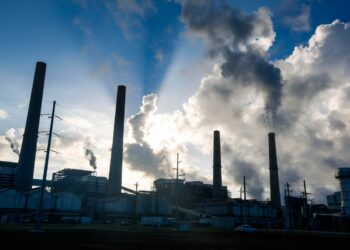There is little doubt that Russia’s invasion of Ukraine and the sanctions that followed resulted in a short-term oil price premium of something in the range of $20-$25 per barrel. Prices peaked on March 8, as the international Brent index price hit $131 and West Texas Intermediate rose as high as $128 as President Joe Biden announced the U.S. ban on Russian crude oil imports.
As of Tuesday morning, however, all of that premium seems to have been shed. Brent was selling at $99/bbl and WTI at $95 in early trades as the market reacts to new COVID-19 lockdowns implemented in parts of China, along with news that Europe has no plans to join the U.S. in banning Russian crude. That easing is understandable, although it could be another case of the markets over-reacting, similar to their reaction last November to initial news of the Omicron variant.
Meanwhile, we must ask what else has really changed in the oil markets? Let’s consider:
- Russia’s war on Ukraine is ongoing and showing no signs of reaching a swift conclusion;
- No deal has been reached with Iran that would allow that country to export more oil onto the global market;
- Also, no deal has been reached with Venezuela that would enable that country to export more oil;
- OPEC+ continues to stick with its disciplined program of adding 400,000 barrels per day at the first of each month, but seems unlikely to commit to adding more than that;
- U.S. crude stocks are below the 5-year average now:
There are no indications yet that higher commodity prices have caused significant reduction in demand. On the contrary, Chris Cook, Senior Equity Trader and Research Analyst at Texas-based Frost Investment Advisors, said in an email that “Right now, we’re running at demand levels that are about 3% higher than before covid hit. We’re at peak demand levels that are being met with less production and less capacity to meet it.”
Given all of that, it’s hard to identify any real bearish factors in the crude markets right now other than China’s so-far limited COVID restrictions. But the bullish factors that had sent Brent to the precipice of $100/bbl prior to Russia’s invasion of Ukraine remain in place.
In the U.S., more bullish factors are about to fall into place. The U.S. refining sector is now entering the time of year when many facilities are taken offline to perform periodic maintenance. The industry is also approaching the time of year when refiners must make the switch from manufacturing a handful of winter blends of gasoline to the more costly program of making dozens of summer blends under the EPA’s haze-reduction regulations. Refiners must make each of those blends in specific volumes to be delivered to specific locations on a just-in-time basis, which increases refining and transportation costs during the warmer months of the year. Those costs will be passed onto consumers at the gas pump.
In a normal year, the summer driving season kicks in towards the end of May, as school years come to a close and families begin to embark on driving vacations. The resulting rise in gasoline demand also results in higher prices at the pump.
These factors occur every year and are inevitable barring another round of more global COVID-19 restrictions. While AAA reports that the national average price at the pump has dropped slightly over each of the past three days, those factors will soon begin offsetting further price relief for consumers.
What it all means is that the gasoline price roller-coaster ride of the last few weeks is likely to continue for the foreseeable future. It’s the most truly predictable feature in today’s market.











